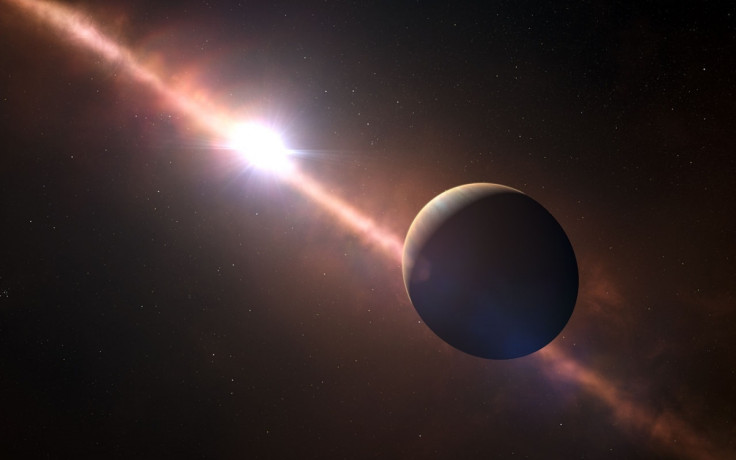Space: Day Length of Alien Exoplanet 'Beta Pictoris b' Discovered for First Time

Researchers have measured the length of an exoplanet day for the first time.
Exoplanet Beta Pictoris b orbits the naked-eye star Beta Pictoris, which lies about 63 light-years from Earth in the southern constellation of Pictor. Discovered six years ago, it was one of the first exoplanets - planets outside our solar system - to be directly imaged.
Using the CRIRES instrument on the Very Large Telescope, operated by the European Southern Observatory in northern Chile, a team of Dutch researchers have found a day on the planet lasts just eight hours.
The team, from Leiden University and the Netherlands Institute for Space Research found that the equatorial rotation velocity of exoplanet Beta Pictoris b is almost 100,000 kph. By comparison, Earth travels at just 1,700 kph. Beta Pictoris b is over 16 times larger and 3,000 times more massive than our planet.
"It is not known why some planets spin fast and others more slowly," said Remco de Kok, co-author of the study. "But this first measurement of an exoplanet's rotation shows that the trend seen in the Solar System, where the more massive planets spin faster, also holds true for exoplanets. This must be some universal consequence of the way planets form."
Beta Pictoris b is only around 20 million years old, compared to 4.5 billion years for the Earth. Over time, the exoplanet is expected to cool and shrink, which would increase its spin even more.
The team made use of a precise technique called high-dispersion spectroscopy to split light into its constituent colours — different wavelengths in the spectrum. The principle of the Doppler effect allowed them to use the change in wavelength to detect that different parts of the planet were moving at different speeds and in opposite directions relative to the observer.
By very carefully removing the effects of the much brighter parent star, they were able to extract the rotation signal from the planet.
"We have measured the wavelengths of radiation emitted by the planet to a precision of one part in a hundred thousand, which makes the measurements sensitive to the Doppler effects that can reveal the velocity of emitting objects," says Ignas Snellen, the lead author.
This technique is closely related to Doppler imaging, which has been used for several decades to map the surfaces of stars. The fast spin of Beta Pictoris b means that in the future it will be possible to make a global map of the planet, showing possible cloud patterns and large storms.
© Copyright IBTimes 2025. All rights reserved.






















